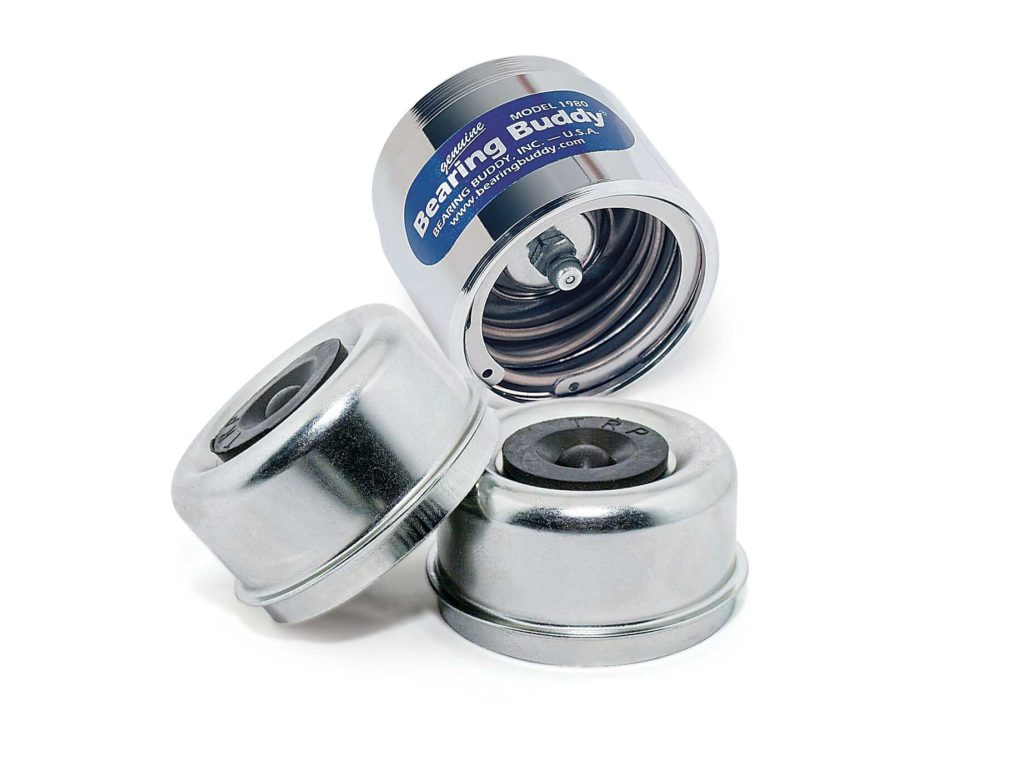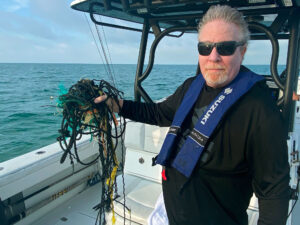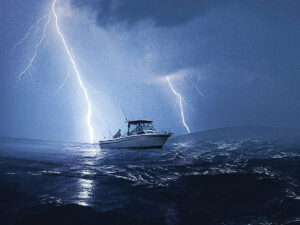
Your boat trailer’s wheel bearings need lubrication to dissipate heat, stave off corrosion, and keep those wheels a-rolling. There are three general types of wheel-bearing lubrication systems, each with its particular maintenance characteristics. Take care of them right, lest you end up as a roadside attraction.
Oil Bath
Oil-bath wheel hubs feature a threaded end onto which a plastic inspection cap fits. Proponents claim less maintenance versus greased bearings. This entails periodically checking the fluid level and adding hypoid oil. Full oil changes are recommended at 20,000 miles. You still need to perform regular inspections of the wheel bearings themselves, which we recommend at about 12,000 miles or annually—meaning that’s when you’ll be changing the oil in the hub as well.
Oil-bath systems are robust—tractor-trailers use them—but versus grease, they may allow air pockets, which can lead to condensation, and if the cap is damaged, all the oil will drain, and your wheel will stop spinning immediately. Check out liqualube.com for one maker of oil-bath hubs.
Grease Cap/Dust Cap
With this most basic lubrication system, you pack, or fill, the hub with grease by hand. Then you install a friction–fit, flanged cap. C.E. Smith’s 16200A provides a good example (cesmith.com). The cap, larger than the hub, must be driven in with a mallet or a block of wood. The cap should be removed, and the bearings inspected and then repacked with fresh grease every 4,000 miles or on an annual basis.
A hub well-packed with grease isn’t likely to allow air pockets that hold moisture. Also, if the cap falls off, grease won’t stay in the hub forever, but it will stay in place for many miles—hopefully, long enough for you to notice.
Load Rite and Tie Down Engineering both offer proprietary systems wherein the dust caps are fitted with Zerk fittings through which grease is applied. The new grease pushes old grease out through a channel on the inside of the wheel. These claim longer -service intervals.
Spring-Loaded
Bearing Buddy (bearingbuddy.com) is the most widely used spring-loaded bearing protector (other brands exist). These install into the wheel hub with a drive fit like dust caps. A Bearing Buddy contains a spring-loaded plate and a Zerk fitting. The spring presses grease against the bearings. This is poignant because air in wheel hubs—hot from road travel—contracts when immersed in -water at the ramp. This creates a vacuum inside the hub that can suck in water and grit. The spring pressure (3 psi) helps protect the bearings. With Bearing -Buddy protectors, you can go for about 8,000 miles before inspecting the bearings (or -annually). This type of protector also provides a visual indicator: The position of the spring-loaded plate shows the grease level.
Read Next: Maintaining Boat Trailer Wheel Bearing
These types of bearing protectors may not be the right choice for use in conjunction with the proprietary flow-through systems of Load Rite and Tie Down mentioned above. The spring pressure may push grease out the exit channel or rear seal of the hub.









